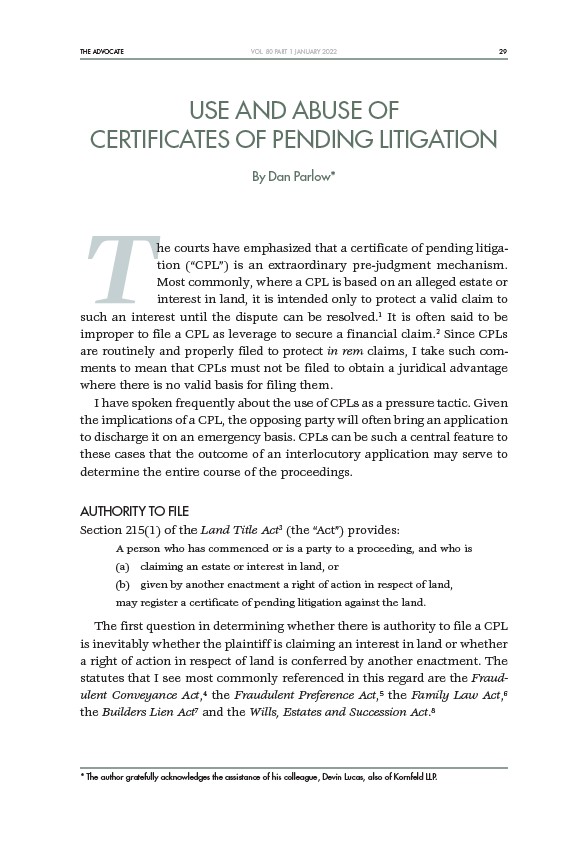
THE ADVOCATE 29
VOL. 80 PART 1 JANUARY 2022
USE AND ABUSE OF
CERTIFICATES OF PENDING LITIGATION
By Dan Parlow*
T he courts have emphasized that a certificate of pending litiga-
tion (“CPL”) is an extraordinary pre-judgment mechanism.
Most commonly, where a CPL is based on an alleged estate or
interest in land, it is intended only to protect a valid claim to
such an interest until the dispute can be resolved.1 It is often said to be
improper to file a CPL as leverage to secure a financial claim.2 Since CPLs
are routinely and properly filed to protect in rem claims, I take such comments
to mean that CPLs must not be filed to obtain a juridical advantage
where there is no valid basis for filing them.
I have spoken frequently about the use of CPLs as a pressure tactic. Given
the implications of a CPL, the opposing party will often bring an application
to discharge it on an emergency basis. CPLs can be such a central feature to
these cases that the outcome of an interlocutory application may serve to
determine the entire course of the proceedings.
AUTHORITY TO FILE
Section 215(1) of the Land Title Act3 (the “Act”) provides:
A person who has commenced or is a party to a proceeding, and who is
(a) claiming an estate or interest in land, or
(b) given by another enactment a right of action in respect of land,
may register a certificate of pending litigation against the land.
The first question in determining whether there is authority to file a CPL
is inevitably whether the plaintiff is claiming an interest in land or whether
a right of action in respect of land is conferred by another enactment. The
statutes that I see most commonly referenced in this regard are the Fraudulent
Conveyance Act,4 the Fraudulent Preference Act,5 the Family Law Act,6
the Builders Lien Act7 and the Wills, Estates and Succession Act.8
* The author gratefully acknowledges the assistance of his colleague, Devin Lucas, also of Kornfeld LLP.